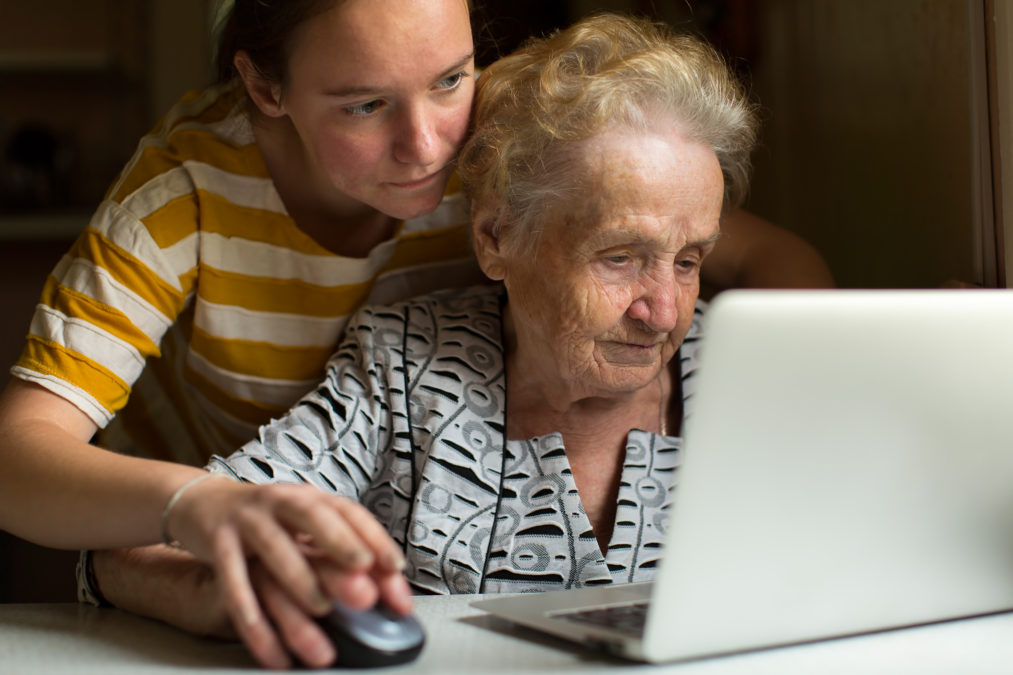As companies strive to embrace next-gen technologies to improve customer experiences and streamline internal processes, they should be aware that unwanted side-effects could appear. In particular, specific sections of society may be vulnerable to exclusion from digital society. But this issue can be avoided. A key way to tackle the problem of technology and social isolation is for businesses, the government and the wider public to adopt an ‘everyone-first-digital-first’ policy in access and identification, to avoid companies unintentionally ‘digitally’ isolating some customers, says Sarah Whipp,
So, who is potentially exposed to technology social isolation?
An individual’s socio-economic could be a key indicator. In Callsign’s 2018 User Authentication Report, when asked about preferences for identifying themselves online, ABC1 respondents were found to be twice as likely to use work email, check account balances, and make online transactions than C2DE’s. As a result, concerns were raised regarding individuals from lower socio-economic experiencing technology social isolation and potentially being disadvantaged because of lacking the ‘right equipment to use important online services. Those with lower incomes may not be able to afford smartphones and home broadband if they are living in temporary or unstable accommodation due to the affordable housing crisis that has worsened the situation. Furthermore, libraries across the country with internet access are closing at a rapid pace or have limited opening hours which further limits internet access for all.
AI social responsibility: Does business owe a duty to society as well as shareholders?
Location could be another factor to consider. In fact, Ofcom’s recent report indicates that rural families and businesses are being disadvantaged due to being situated too far from local exchanges that provide fast broadband speeds. In comparison, 17% of homes were not receiving adequate internet to 2% in cities and towns. As a result, customers that are in more suburban or rural areas are at a significant loss of access to online services. The internet could be too slow for specific functions to work or not fast enough to load certain websites.
2018 ONS statistics on UK internet use claim that 90% of adults in the UK used the internet in the last three months. Yet, delving into the study shows only 44% of adults aged 75 years and over were regular users. What’s more, 20% of disabled adults had never used the internet in 2018. These statistics highlight that the elderly and the disabled could be hindered in receiving the best customer service and having access to a full range of products. These individuals should have access to constant connectivity if required, so that they are not being excluded from our digital society.
Technology and social isolation: smartphones
Growth in smartphone ownership has accelerated the propagation of online services. One example, Starling, a challenger fintech, operates on an app-only level, providing cheap and efficient services. Yet, Deloitte’s Global Mobile Consumer Survey in 2018 determined that only 77% of people aged between 55-75 own a smartphone, meaning almost a quarter of the older population are potentially being excluded. Furthermore, generally speaking, the older demographic is less likely to be able to use certain smart devices. As a result, various obstacles prevent the elderly from accessing and using all the services that they might need.
It’s evident that technology social isolation is preventing some users from accessing services because default authentication methods aren’t appropriate for them. Luckily, we are beginning to see global recognition in creating awareness around the importance of digital identity, with The World Identity Network (WIN) partnering with the World Economic Forum (WEF) to establish a Platform for Good Digital Identity. Through this platform, they are calling for digital identities to satisfy at least five criteria to be implemented; they are fit for purpose, inclusive, useful, secure, and offers choice to individuals, which should take steps towards reducing the issues being discussed.
Labour’s Tom Watson calls on society to “embrace an android”
Labour’s deputy leader will today call on society to “embrace an android”, and not fear the future of automation
One remedy is to embrace technology that includes everyone, whilst improving customer satisfaction, reducing fraud and maintaining high levels of security at the same time. The confirmation of identity has an important part to play in this, but the identification process must be relatively frictionless so that all demographics can easily access online services they require.
For tech’s sake: Reconciling emerging tech and the GDPR
The most appropriate technology must provide consumers with a wide choice of identification methods. Technology should be omnipresent in order to serve all areas of society, and identification solutions should lead the fight. If a person is not a smartphone owner, alternative methods such as voice verification, should be used to easily prove their identity. Furthermore, customers should be able to choose identification methods that are easily accessible and have the capability to use. In terms of proving their digital identity, people should be empowered to have the maximum amount of choice, control and consent.
Whilst the digital transformation continues to impact all industries, fuelling a rise in biometrics, AI and machine learning, we must ensure that isolated sections of society have access to these tools. Steps towards the reduction of digital isolation are taking place, let these be the ones taking us towards total elimination.
Sarah Whipp is CMO and Head of Go to Market Strategy, Callsign







